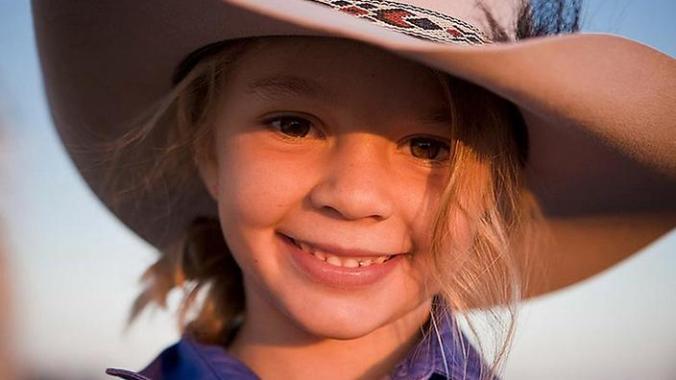 The suicide of 14-year-old girl Amy ‘Dolly’ Everett triggered a much-needed national anti-bullying campaign — but lest we forget Aboriginal children, who are twenty times more prone to take their lives because of bullying.
The suicide of 14-year-old girl Amy ‘Dolly’ Everett triggered a much-needed national anti-bullying campaign — but lest we forget Aboriginal children, who are twenty times more prone to take their lives because of bullying.
By Gerry Georgatos
22 Jan 2018 – 4:15 PM UPDATED 22 Jan 2018 – 4:23 PM
sbs national indigenous television
The death of a child is always heartbreaking, but when it is by suicide it is as devastating as it gets; potentially causing long-term psychosocial effects on loved ones. Equally tragic is the majority of child suicides can be avoided.
As a suicide prevention worker, I know at least one in four child suicides are due to bullying. What is painfully bewildering is that in only a third of cases, the child has told someone that they were contemplating suicide.
We need to come to grips with the fact that child suicides are no longer rare — rates are the highest they have ever been. Annually more than 40,000 children between 12 and 17 are estimated to have made a suicide attempt. One-quarter of 16-year-old females self-harm.
And sadly, the child suicide toll does discriminate.
Suicide takes more Aboriginal and/or Torres Strait Islander children, as well as migrant children from non-English speaking cultural backgrounds, than it does others.
Aboriginal and/or Torres Strait Islander suicides comprise 7 per cent of Australia’s total, but a shocking 80 per cent of Australia’s child suicides aged 12 years and under are of Aboriginal children. Thirty per cent of child suicides up to age 17 are Aboriginal children.
I have often said “the nation should weep” at this harrowing tragedy, which is more than just a national disgrace, it’s damning evidence of who we are as a nation.
The tragedy of 14-year-old Dolly Everett’s case must galvanise the nation to respond not only to suicides from bullying but also to all child suicides. Full stop.
In the weeks before and after Dolly’s tragic passing there were other children lost to suicide. We must tell their stories, and invest in solutions.
Statistics show vulnerable Aboriginal and/or Torres Strait Islander children are at elevated risk. Aboriginal and/or Torres Strait Islander children who live below the poverty line are 20 times more prone to self-harm and attempting suicide due to bullying.
In general, the more financially disadvantaged someone is, the more susceptible they are to bullying and suicidal ideation. Forty per cent of Aboriginal and/or Torres Strait Islanders live below the poverty line, and my research has found that’s the case for nearly 100 per cent of Aboriginal and/or Torres Strait Islander suicides.
There are no words that could comfort any family in the wake of the loss of their child. This also rings true in tightly-knit Aboriginal communities.
I’ll never forget seeing three children buried in the space of five days in one particular community. There were three graves in a row; the youngest a 15-year-old girl. Two of the tragic losses were blamed on bullying. None of the children ever confided they had suicidal thoughts to anyone.
Recently, I travelled to two island communities which recorded their first suicides. Until last year, they had been sheltered from the internet and social media platforms where bullying and mobbing play out in pronounced ways. Mid 2017, both island communities connected to the internet, prior to this there had never been a recorded suicide attempt.
Migrant children are also often neglected in suicide prevention discourse. They are at an elevated risk primarily because of racism, and the perception that they must “fit in”. This can lead to disordered thinking, internalised conflict, shame, and a diminution of the self.
Indigenous youth want involvement in WA suicide prevention programs
An Aboriginal teenager from WA’s far north who tried to take her own life twice says young people must be involved in the design and delivery of suicide prevention programs.
These stories, although distressing, must be told to demand anti-bullying awareness campaigns, to provide protective factors for potential victims, and to teach perpetrators that what they’re doing is wrong.
Education campaigns cannot be limited to schools because a significant proportion of Aboriginal children who suicide do not attend school. They live in impoverished remote communities, where completing secondary school is rare.
We must counter bullying with the same intensity as other public health issues, such as smoking and domestic violence.
We do not need endless research, just the way forward.
Disclaimer: Gerry Georgatos is a suicide prevention researcher and the Humanitarian Projects Coordinator with the Institute of Social Justice and Human Rights. His long-term research focus has been trauma recovery. Gerry is also the National Coordinator Support Advocates for the National Indigenous Critical Response Service.

Readers seeking support and information about suicide prevention can contact:
Lifeline on 13 11 14
Suicide Call Back Service 1300 659 467
MensLine Australia 1300 78 99 78
Multicultural Mental Health Australia
Local Aboriginal Medical Service